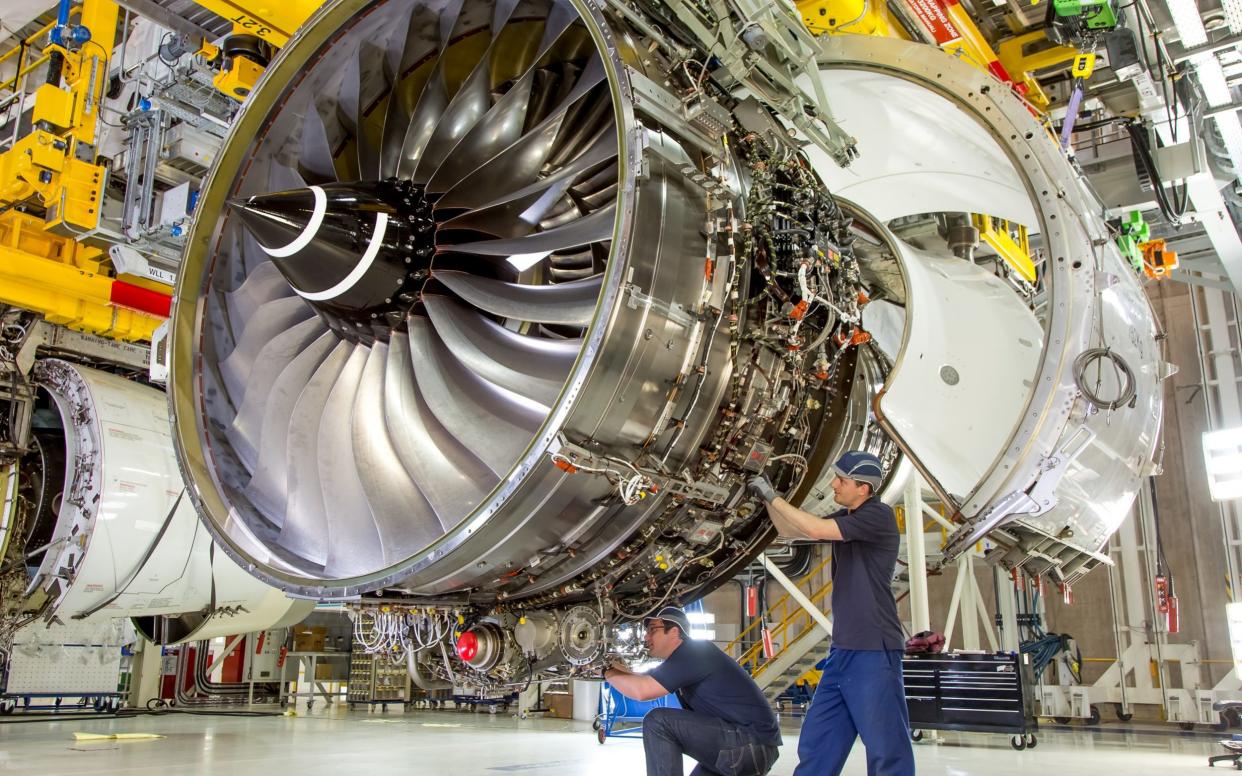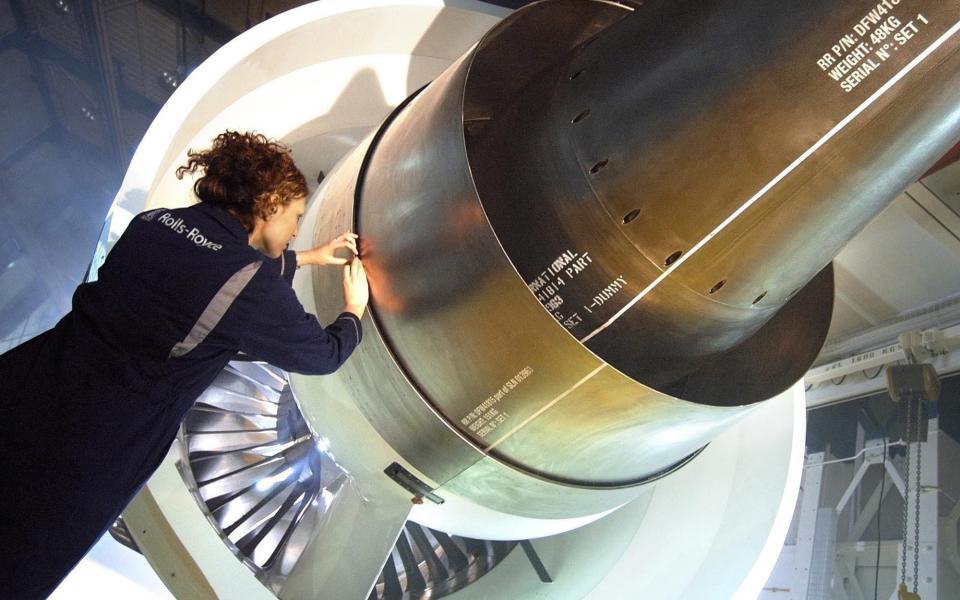Rolls-Royce hit by more engine troubles

Inspectors have found cracks inside several flagship Rolls-Royce Trent XWB jet engines - raising fresh questions over the firm's designs after flaws in another programme saddled it with a £2.4bn bill.
The problems were unearthed during routine maintenance on some of the first engines used to power the twin-jet Airbus A350. They echo troubles Rolls is having with another top-selling engine, the Trent 1000, used on Boeing’s 787 Dreamliner jumbo jet.
Staff examining Trent XWBs discovered cracks on some of the 34 fan blades of the engines' intermediate compressors when they came in for five-year scheduled maintenance.
Rolls described the cracks as “indications of wear” on a small number of engines. The company then checked about 100 of the roughly 650 Trent XWB engines in service and found one in five were affected.
A string of flaws were uncovered in the Trent 1000, forcing the 787 to be grounded so that urgent inspections and repairs could be carried out.
It was feared planes could suffer a shutdown of both their engines in the middle of a flight, and one Trent 1000 suffered a partial disintegration as it took off from Rome.
The repairs, redesigns and compensation for airlines cost Rolls £2.4bn.
Bosses have insisted that there will be no immediate disruption from problems with the Trent XWB, which is a vital part of its business as the firm seeks to recover from a Covid battering.
Rolls has the exclusive contract to provide engines for the A350. About 320 XWBs have been delivered to airlines out of almost 1,000 ordered, and the model is expected to account for half of annual engine deliveries.
Rolls was struggling even before coronavirus virtually stopped passenger flights, sending shares down about 70pc.
On top of two earlier rounds of restructuring and cost savings, the pandemic means Rolls is cutting 9,000 staff - about 15pc of its global workforce - and seeking to shore up its finances. The company is considering a sale of its Spanish engine parts business ITP, and is also mulling a £1.5bn stock market fundraising.
No cost has been put on fixing the problems with the XWB, although the company said it was not a significant amount in the context of its overall finances.
Rolls has the capacity and components to repair affected Trent XWB engines and is unlikely to face compensation claims from airlines.
The company added that the Trent XWB remains highly reliable, after the first engines flew an average of nine million miles with no unplanned maintenance. None of the Trent XWBs have shut down during as flight.
A spokesman for Rolls said: “Unlike the Trent 1000, there is no impact on flight operations or in-flight disruption, but this is a safety conscious industry so obviously we are taking immediate action.”
European flight safety regulator EASA is expected to issue a directive on Wednesday requiring the Trent XWB engines to be checked for the problem and repaired, though it does not require unaffected A350s to be grounded.
One Rolls insider said: “This is a different design of engine and a different type of problem to the Trent 1000s - and we found the problem, it didn’t come looking for us like with the Trent 1000.”
While some Trent 1000s were found to have problems after as few as 300 takeoff and landing cycles (about a year into their life), the XWB appears to be suffering cracks at 2,300 cycles.

At this point the engines are approaching their first scheduled major overhaul in Rolls’s maintenance shops.
The revelations nonetheless invite comparison with how Rolls first revealed concerns over the Trent 1000 programme, before they ballooned to a multi-billion pound cost.
In the summer of 2016, Rolls announced what were described as minor issues with Trent 1000 engines wearing out earlier than expected on 787s flown by the aircraft’s launch customer ANA Airlines.
However, the issues grew until nine different problems were identified across three versions on the engine. A fix for one of them is still outstanding, meaning the engines do not last as long as they were designed before requiring an overhaul.
Rolls struggled to keep on top of the problems, with 787s grounded due to fears both engines could shut down during a flight. Planes were also banned from flying remote routes that took them far from airports where pilots could land in an emergency.
As well as paying for compensation and repairs, the company also had to assemble teams of engineers around the world to inspect 787s which could not be flown.
Shares rose 2.4pc to 272p. They started the year at 681p.


